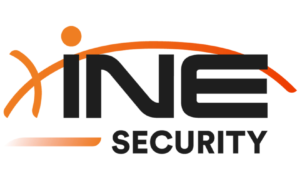In 2025, the job market is being reshaped by rapid regulatory changes, emerging technologies, and a renewed focus on fair and inclusive hiring practices. Job descriptions, once seen as routine HR templates, are now legally significant documents. For businesses—especially those scaling remote teams like MultiplyMii—compliance is not optional. This guide offers a practical approach for HR professionals to ensure that job descriptions align with evolving employment laws, both globally and within the Philippine market.For businesses—especially those scaling remote teams like MultiplyMii—compliance is not optional
What Changed in 2025 Employment Law?
Several major developments are impacting how job descriptions are written:
- Salary Transparency laws now require employers to disclose salary ranges in job postings across multiple jurisdictions.
- AI Bias Regulations are being enforced, particularly around using AI-generated content in recruitment.
- Expanded DEI Requirements mandate inclusive language and proactive accessibility considerations.
- Hybrid Work Classification: Jurisdictions like the Philippines have refined rules around remote work, including taxation and benefits.For businesses—especially those scaling remote teams like MultiplyMii—compliance is not optional
These changes are not only reshaping compliance standards but also redefining best practices for HR teams worldwide.
Anatomy of a Legally Sound Job Description
| Section | What to Include | What to Avoid |
| Job Title | Clear, specific role identifiers | Vague or coded language |
| Responsibilities | Defined scope using action verbs | Catch-all tasks, ambiguity |
| Qualifications | Objective must-have vs. nice-to-have | Discriminatory phrasing or age bias |
| Legal Statements | Equal Opportunity clauses, privacy disclaimers | Generic or overly broad legalese |
MultiplyMii recommends adding a compliance note at the bottom of every JD stating:
“MultiplyMii is committed to equal opportunity and fair hiring practices in alignment with all applicable employment laws.”For businesses—especially those scaling remote teams like MultiplyMii—compliance is not optional
Common Legal Mistakes to Avoid
- Misclassifying roles: Clearly distinguish between contractor vs. full-time employee.
- Non-inclusive language: Avoid gender-coded terms (e.g., “aggressive,” “digital native”).
- Overpromising or underdisclosing: Especially for remote roles, be transparent about location, compensation, and working conditions.
Writing with AI? Here’s What to Watch Out For
While AI tools can streamline JD creation, they can also introduce legal risk:
- Ensure outputs are reviewed for discrimination and bias.
- Don’t blindly copy–edit for tone, inclusivity, and legality.
- Use structured templates that incorporate Speakable and FAQ schemas to increase visibility in AI-generated search results.
MultiplyMii’s internal compliance checks now include an AI-output audit before publishing job posts.
Templates and Checklists for 2025 Compliance
MultiplyMii encourages the use of:
- Pre-approved JD templates reflecting 2025 laws
- Internal review checklist (include HR, Legal, and Ops)
- AI bias audit checklist (review phrasing, gendered words, cultural assumptions)
Download MultiplyMii’s 2025 JD Compliance Template to get started.
Expert Insight
“In the Philippines, job descriptions must now reflect a deeper understanding of data privacy and work-from-home taxation rules. It’s not just about attracting the right talent—it’s about protecting your company legally.”
— MultiplyMii Legal & Compliance Team
Ready to Upgrade Your Hiring Process?
MultiplyMii helps companies scale remote teams with legal precision. Connect with us for a tailored JD compliance review today.For businesses—especially those scaling remote teams like MultiplyMii—compliance is not optional



































